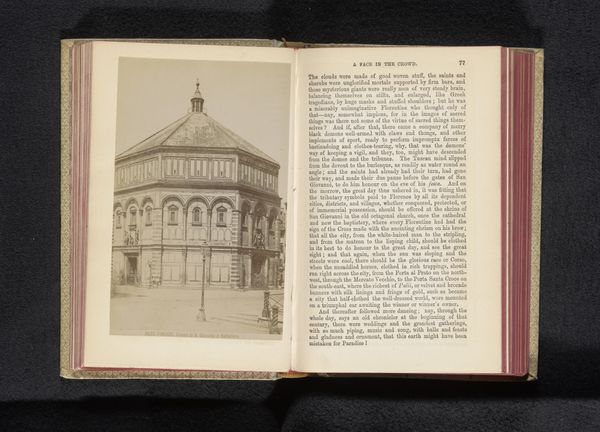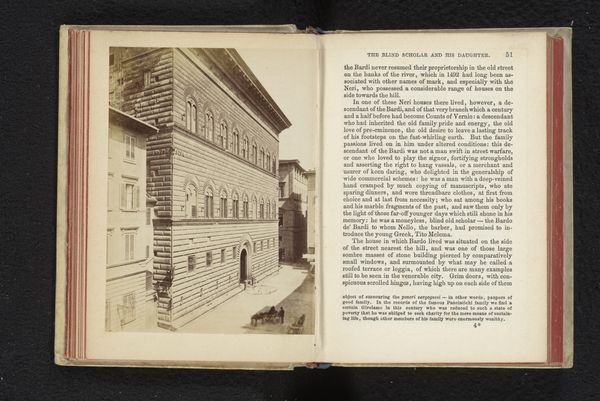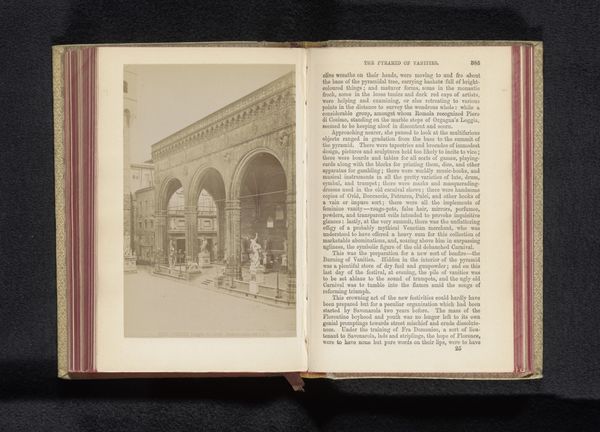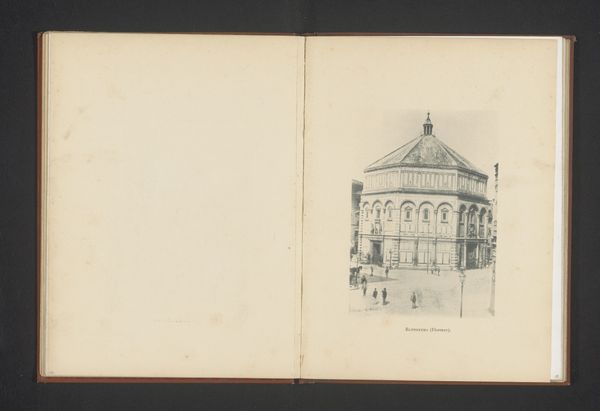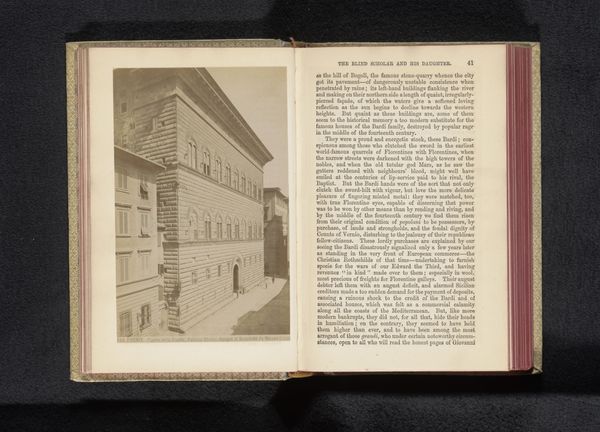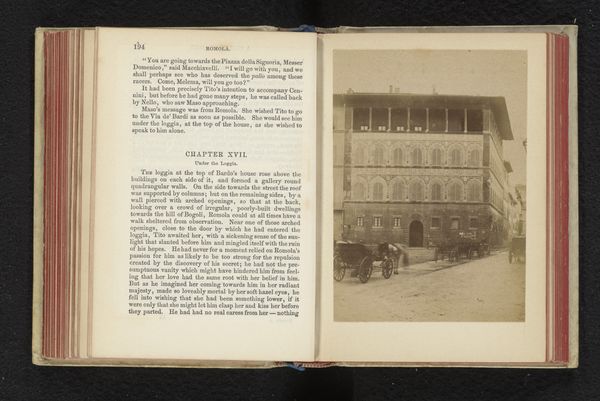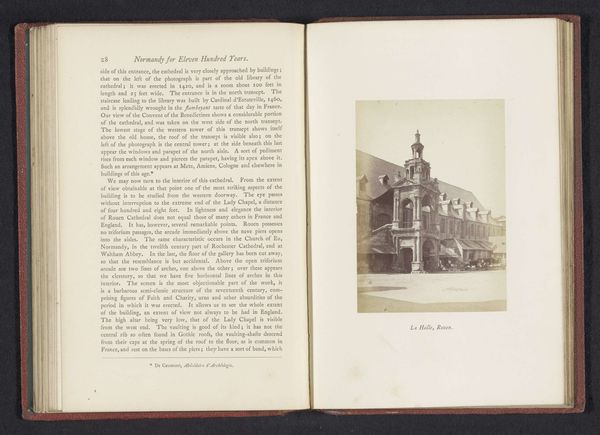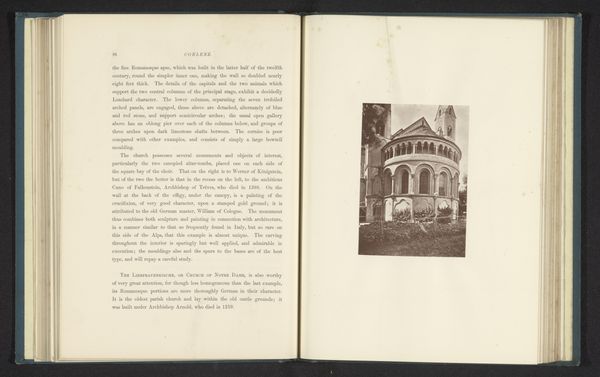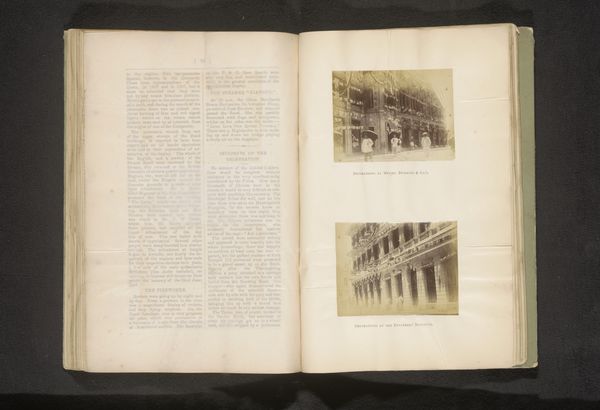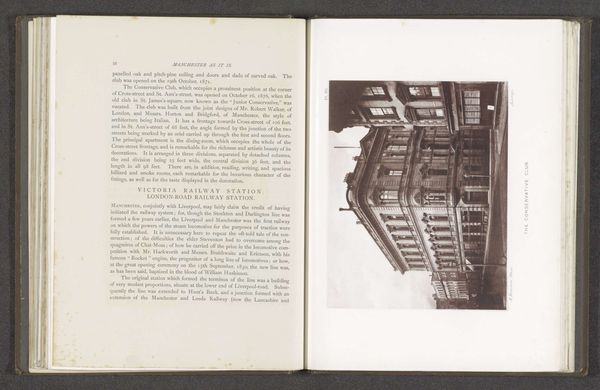
print, photography, albumen-print, architecture
# print
#
photography
#
cityscape
#
genre-painting
#
italian-renaissance
#
albumen-print
#
architecture
#
historical font
Dimensions: height 137 mm, width 98 mm
Copyright: Rijks Museum: Open Domain
Curator: This albumen print captures the Baptistery in Florence. Attributed to Giacomo Brogi and created before 1863, it provides us with a glimpse into 19th-century perceptions of Renaissance architecture. Editor: It's a very stately image. Almost reverential. The clarity is striking; you can see so much detail in the stonework, despite the print being quite small in the book it comes from. The light emphasizes its perfect geometry, like a sacred object placed within a holy book. Curator: Indeed. Consider that Brogi was operating within a burgeoning tourism industry, documenting Italian heritage. Photography became a crucial tool, both creating and perpetuating idealized images of Italian Renaissance sites for an international audience. Editor: The way the baptistery dominates the frame, removed from contemporary Florentine life, certainly emphasizes its timelessness, or rather, the curated image of timelessness intended to elevate the space itself. Who was this "international audience", though? It seems important to remember who gets access to cultural narratives in these historical framings of place and value. Curator: The intended audience was primarily wealthy, white, European and American tourists keen on experiencing the grand tour experience through visual documents that celebrated their understanding of artistic achievement within a specific racialized framework. Brogi's images affirmed a narrative of artistic and cultural superiority. Editor: Which is embedded deeply within our understandings of who we see as the key shapers and holders of knowledge and worth, and continues into how we study and protect artwork in the present day. We must contend with these images’ loaded impact on constructions of Western cultural authority. Even the decision to preserve buildings like this and give them continued aesthetic priority feeds directly into colonial-era ideas of taste and accomplishment. Curator: Absolutely. Images like these also aided the reinforcement of established artistic canons, determining the “must-see” monuments while eliding the socio-political realities of the time. But on this very picture you can actually read a history of Italy as unified nation through the making available to its inhabitants and guests of the cultural relevance and historical precedence that Brogi's body of work offered as social impact. Editor: Considering these photos not simply as documents but as ideological interventions allows us to have critical conversation about why these specific buildings and artifacts gained prominence as representative images. Thank you for outlining the sociopolitical influences. Curator: Of course, our interpretation constantly changes with a evolving understanding of historical context.
Comments
No comments
Be the first to comment and join the conversation on the ultimate creative platform.
